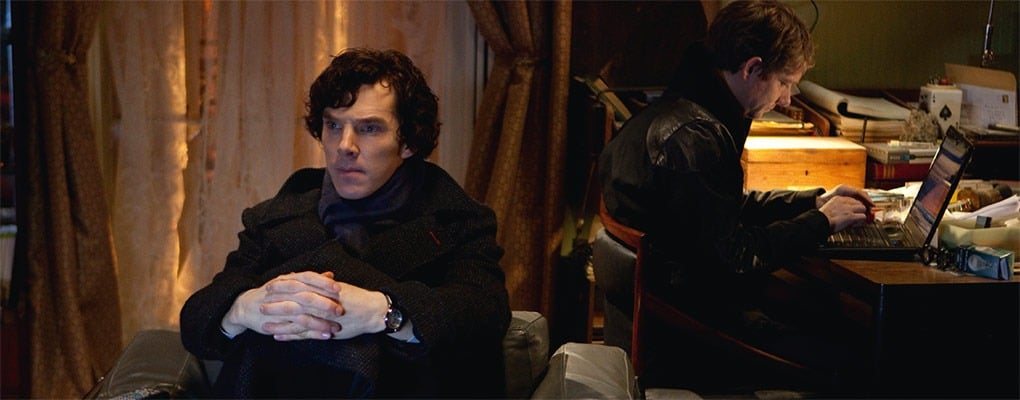Features
Sherlock Chronicles: reinventing deduction
We’ve been poring over the beautiful Sherlock Chronicles from BBC Books. With exclusive behind the scenes content and access-all-areas insights into the stories and the cast, this book is the ultimate guide to our favourite show – the one and only Sherlock.
In this extract from Sherlock Chronicles, director of episodes A Study in Pink, The Great Game, A Scandal in Belgravia and The Hounds of Baskerville Paul McGuigan explains the thought processes behind some of the important directing decisions for the first series:
“‘For Steven’s first story…we had to be confident about who Sherlock was and how we were going to present it. In the first five minutes of A Study in Pink, we threw everything at it – Sherlock-vision, text, freeze-frame stuff, phone stuff, ‘wrong, wrong, wrong’ at the press conference… I wanted people to relax after that and get the language of the show. So having done that and The Great Game, when we get to Series Two, we can have Sherlock on a sofa in a field, and nobody questions it. You have to be brave and say to audience: This is our show.’
As Mark’s draft scripts came through, Paul realised that there were ‘a lot of scenes to do with phones and computers and so on. That was the most important turning point for us. I said, “I’ll only do this if I can bring my own style to it.” I was quite adamant that I wasn’t going to shoot screens on phones – that’d be a total waste of my time, everyone knows what a phone screen looks like, and Sherlock should be so much more inventive. The first thing I came up with was how to let the audience into Sherlock’s mind. So you first see the crime scene from a proscenium view. Then, when you see it again, when Sherlock’s making his deductions, you see what he’s seeing, which opens up the scene in a new way.

‘So I worked on the methodology of that a lot, getting the writers and producers excited about the possibilities. That opened up their writing and allowed them to think about it in a different way as well. The realisation that a lot of the dramatic moments were said to a phone screen or a computer – which is not dramatic – pushed us towards the onscreen text idea. We knew there’d be no point putting text onscreen afterwards as an afterthought; we needed to actually frame it. So Steve Lawes, the Director of Photography, shot them in thirds of frames: one-third Benedict or Martin, two-thirds space for the framing of the text. Text would also move within the environment so it felt like a deliberate thing, rather than something that was splattered on afterwards.
 ‘I knew we had something special when I saw the final version of A Study in Pink, and watched that early scene when Lestrade comes bounding up the stairs to ask Sherlock, “Will you come?” In the first edit, the music used was quite dark. I turned round to Charlie Philips, the editor, and said: “We’re making a big mistake here, because this excites Sherlock – we should make the music go against type.” So we replaced it with this upbeat music. Rewatching it was great because we’d not seen a show before where death and murder become exciting. That was unexpected. Watching that later with a group of people, I thought, “This might do all right.”‘
‘I knew we had something special when I saw the final version of A Study in Pink, and watched that early scene when Lestrade comes bounding up the stairs to ask Sherlock, “Will you come?” In the first edit, the music used was quite dark. I turned round to Charlie Philips, the editor, and said: “We’re making a big mistake here, because this excites Sherlock – we should make the music go against type.” So we replaced it with this upbeat music. Rewatching it was great because we’d not seen a show before where death and murder become exciting. That was unexpected. Watching that later with a group of people, I thought, “This might do all right.”‘


Please note: Moderation is enabled and may delay your comment being posted. There is no need to resubmit your comment. By posting a comment you are agreeing to the website Terms of Use.